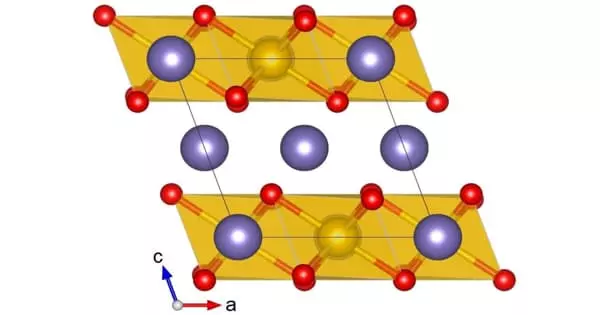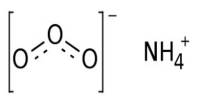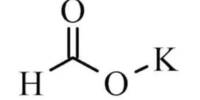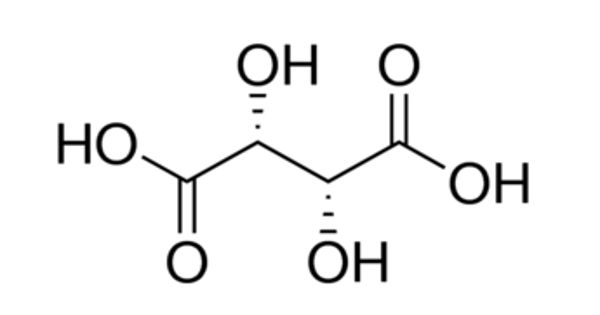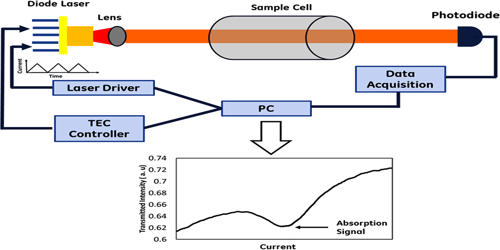Lithium iridate, also known as Li2IrO3, is a chemical compound composed of lithium, iridium, and oxygen. It crystallizes into black crystals with three slightly different layered atomic structures, α, β, and occasionally γ. When cooled to 15 K, lithium iridate exhibits metal-like, temperature-independent electrical conductivity and changes its magnetic ordering from paramagnetic to antiferromagnetic.
Structure
Li2IrO3 typically crystallizes in the α or β phase, though a rare phase has been reported. The –Li2IrO3 crystal structure is made up of an alternate stacking of hexagonal Li layers and honeycombs of edge-sharing IrO6 octahedra with Li in the center. Because of the offset in adjacent layers, the crystal symmetry is relatively low (monoclinic). Twinning defects abound in Li2IrO3 crystals where the ab crystal planes are rotated by 120° around the c axis.
Synthesis
Li2IrO3 is created by oxidizing Li and Ir metals during the heating process. The spiral staircase-like growth chamber enables the nucleation of various crystals at various staircase steps.
Long-range entanglement quantum states exhibit some of the most intriguing and enigmatic properties in condensed-matter systems. Understanding the nature of these quantum states and elucidating their behavior remains a formidable challenge, owing to the difficulty, if not impossibility, of solving relevant microscopic models.
Direct sintering of Ir and Li metals, which both oxidize during heating in the ambient atmosphere, can be used to grow Li2IrO3 crystals. The α phase is formed at temperatures ranging from 750–1050 °C, while heating to higher temperatures results in the β phase. Larger crystals are produced when Li metal is used instead of more traditional lithium carbonate, which is easier to handle and store. The γ phase can be created by calcining lithium carbonate and iridium(IV) oxide, then annealing in molten lithium hydroxide at 700–800 °C.
Properties
Lithium iridate is black in color and has a metal’s relatively high, temperature-independent electrical conductivity. Its α and β phases exhibit Kitaev exchange coupling between magnetic spins derived from Ir4+ ions. At temperatures below 15 K (Néel temperature, TN), these spins form an antiferromagnetic lattice, whereas the material is paramagnetic above TN.
Possibly useful applications
Lithium iridate could be used as electrode material in a lithium-ion battery. This application is hampered by the high cost of Ir in comparison to the less expensive Li2MnO3 alternative.
